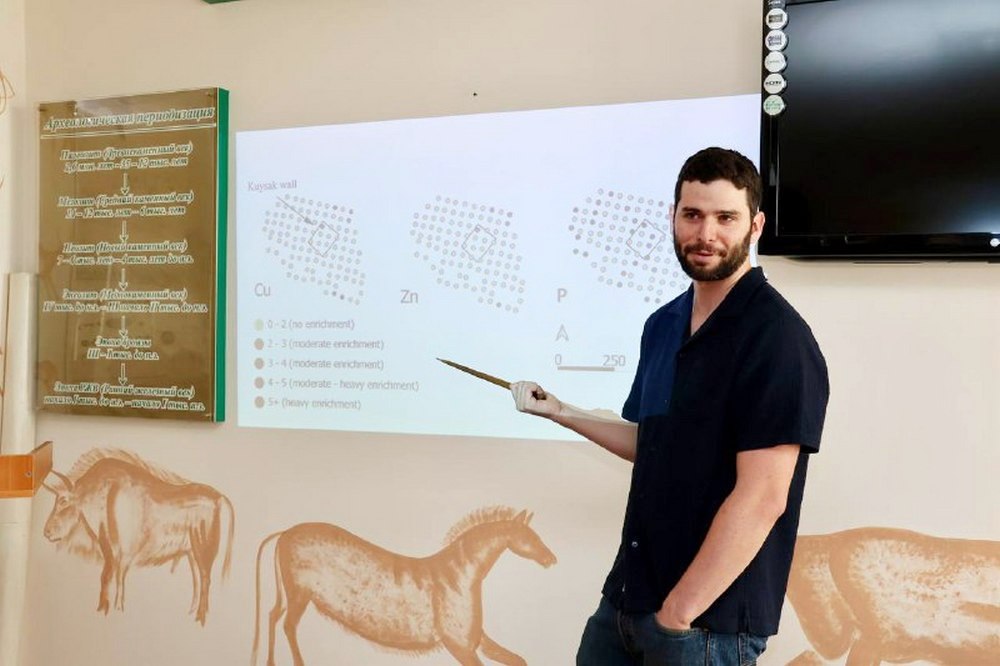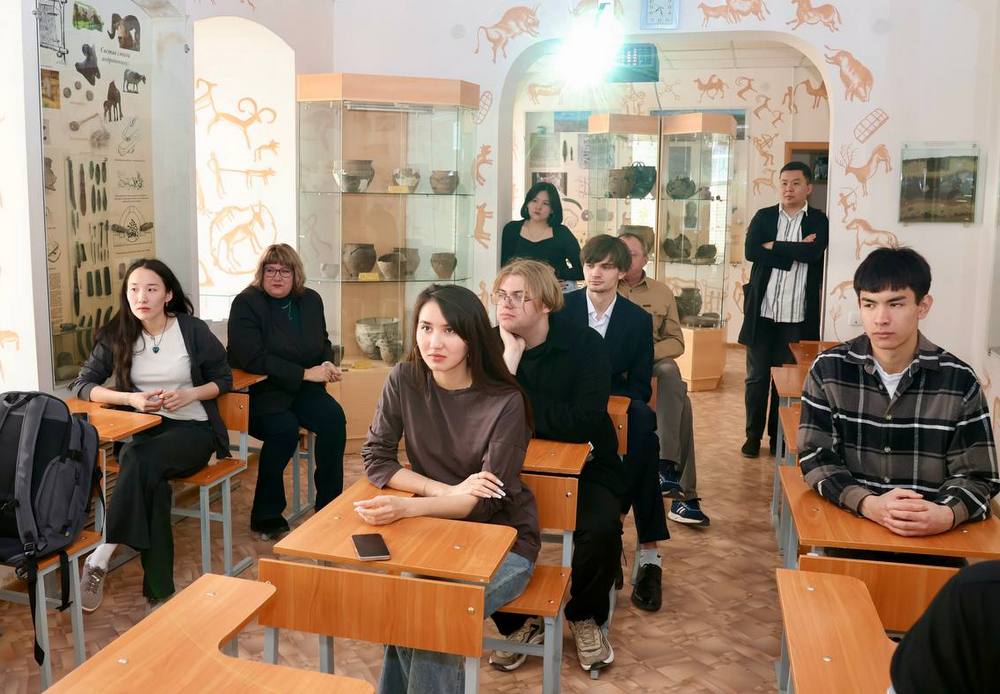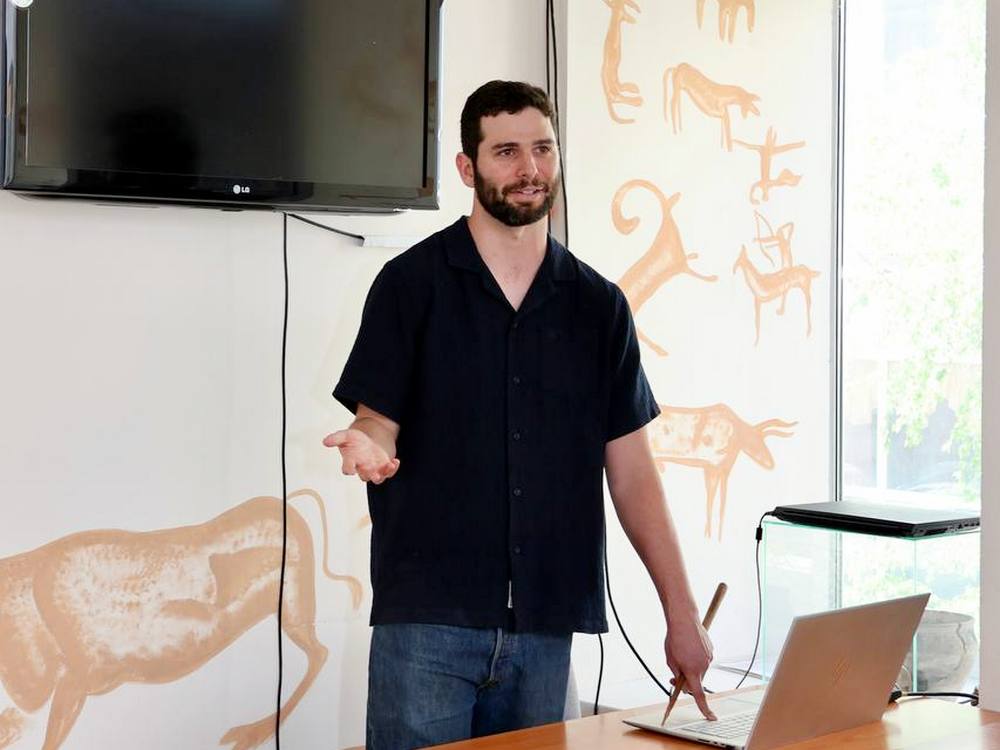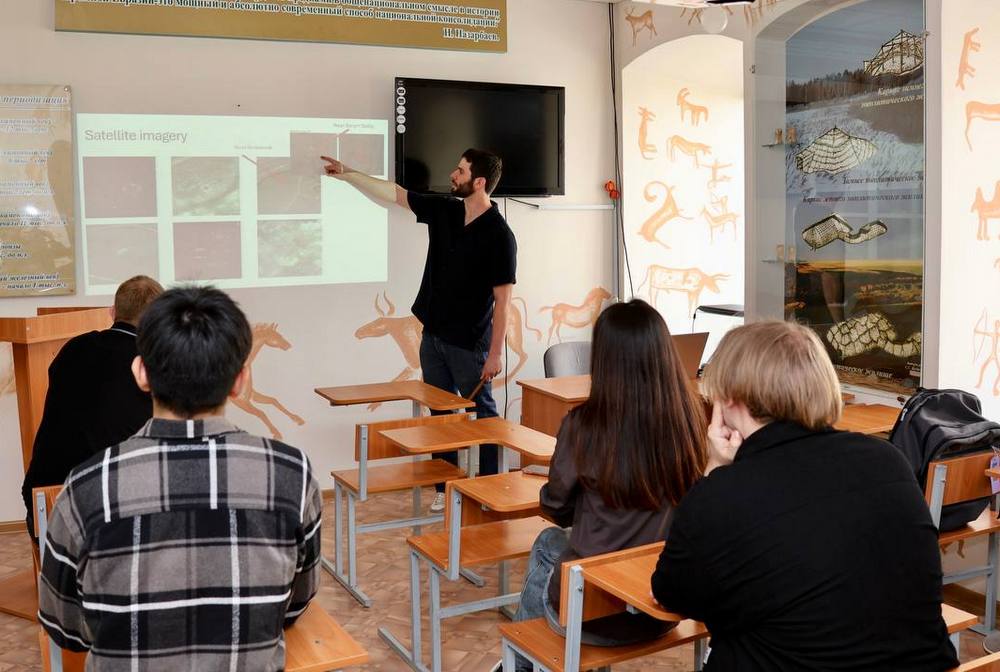A doctoral student from Washington University (St. Louis, USA) gave a presentation at the KRU archaeological laboratory today.
This is not Jack Berner's first visit to Baitursynuly University. He is very interested in the prehistory of Eurasia in a broad sense.
His dissertation will be devoted to the nature of proto-urban settlements.
In his dissertation, the American scientist uses materials from his colleagues - KRU archaeologists.
Today, the guest gave a presentation on his research in our archaeological laboratory. And answered our questions.
What is interesting for you, as a scientist, in collaborating with KRU?
I am interested in the research of Irina Shevnina and Andrey Logvin. They are working on archaeological topics that are very important to me. In particular, these are proto-cities of the Bronze Age on the Eurasian steppe. The data will be important for my dissertation and scientific publications.
What is the purpose of this visit?
I came to pick up archaeological materials from the 2024 excavations in Kamysty. Also to discuss future research plans for 2025 in Bestamak.
How effective was this visit?
This trip was very productive. Archaeologists, including PhD student Almas Zhalelov, helped me collect archaeological materials and organized my trip.
How do you rate the work of KRU archaeologists?
Truly wonderful! I learned a lot from your scientists. It is not surprising that many international researchers are interested in your region, because very important Bronze and Pre-Bronze Age settlements are regularly excavated here.
What is unique about the discoveries that you make together with our scientists?
We are planning to conduct a serious geochemical and GIS study of the known Bronze Age settlements, as well as the territories beyond them (it is not yet known whether there are significant traces of cultural activity there). In addition, I have an extensive set of satellite images that can be used to search for new archaeological sites. Such studies have not been conducted at these sites before.
What are your future plans for collaboration?
I will continue collaborating with the KRU archaeologists. This summer I will join their project in Bestamak, and in the following years I hope to continue our work identifying potential archaeological sites.
I will also provide some data for the conference in October, where Dr. Shevnina and Dr. Logvin will present their research





